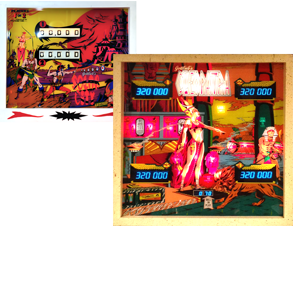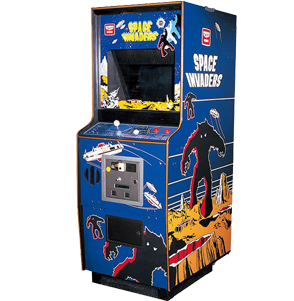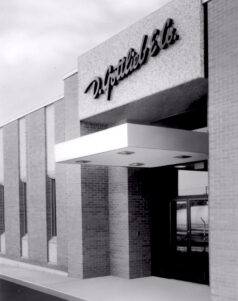
Pinball has a long history that dates back to 1777, but not many people are aware of it. It all began with a game called “Bagatelle”, which was a variation of croquet played indoors.
The game was invented in France for a party hosted by the Count of Artois, the brother of King Louis XVI, at his lavish Château de Bagatelle. The Italian word bagattella means ‘a trifle’ or ‘a decorative thing’, and that’s what the count named his new game. It involved a table and cue sticks that players used to shoot balls up a sloped playfield. The game became very popular in France and soon spread to other countries.
In 1871, an American named Montagu Redgrave created a game called Improvements in Bagatelle, which was the first step towards the modern “Pinball Machine”. His game had no flippers or other features, but it had the basic idea and concept of pinball.
Let’s take a walk through history and see how pinball evolved from a simple wooden board with pins to the sophisticated electronic wonders of today.

Bagatelle was a simple game where a glass marble was hit into the playfield with a stick just like a pool cue. The ball would bounce off metal pins and land in holes that had numbers next to them, this was the score and would be added up at the end of the game. This is where the “Pin” in Pinball comes from.
1777
Bagatelle

Montagu Redgrave from the United States devised a game called Improvements in Bagatelle, this is what started the ball rolling towards what we know today as a Pinball Machine.
1871
Improvements in Bagatelle

The first coin-operated bagatelle game was called “Log Cabin” and was made by the Sicking Company in 1880, also by now a spring-loaded shooter had been introduced to project the ball into play.
1880
Coin Operation

Williams was considered the first company to use electricity in a pinball game to add sounds and make it more attractive with lights. The first tilt mechanism was also introduced around 1934.
Contrary to popular belief, ‘Contact’ was not the first game to use electricity. Dick Bueschel notes in Pinball 1 that there were pinball games and bagatelles of the early 1900’s with electricity that “rang bells, flashed lights and kicked balls around in all directions.”
‘Contact’ did, however, put several exciting ideas into one game that proved to be an enormous success and prompted many copycat versions by other manufacturers. Its success transformed Harry Williams into a major player in the industry.
1933
Electricity is Used

The world’s fair held in 1933 saw pinball games advance even further with “Jigsaw” being very innovative for its time, backglasses started to appear where the score was presented using lights and painted glass.
1935
The Story Continues

Pinball was banned beginning in the early 1940s until 1976 in New York City by the mayor Fiorello La Guardia, he believed that it was a gambling device, and kids were wasting money on them. La Guardia held raids throughout the city, collecting thousands of machines. He would also participate with police in destroying machines using sledgehammers then dumping the broken pieces into the Hudson River.
1941
Pinball is Banned

Henry Mabs from Gottlieb & Co designed a baseball themed game which for the first time allowed the player to control the ball with two arms at the bottom of the machine. Humpty Dumpty had three sets of flippers and in the early 1950’s flippers appeared in pairs at the lower front of the game.
1947
The Flipper

Flippers at the lower bottom of the playfield proved very popular and pinball was on its way to becoming a pop culture icon. Mechanical score reels also started appearing throughout the 50’s and the backglass artwork started to become more of a feature.
1950’S
Pinball Popularity Grows

The pinball industry made more money than the entire American film industry during the 1950s through the 1970s. Flippers grew from 2″ to 3″ and The Who made it famous with the Rock Opera “Tommy”. Pinball was booming, you could find machines in laundromats, bowling alleys, corner stores, fish & chip shops, arcades and more.
“Traditionally (although people have different opinions) first golden era was in the 1930s. Second golden era was from 48 to 60. Third golden age was from 72 to 82.”
(Marco Rossignoli)
1970’S
Pinball Booms – A Golden Era

Roger Sharpe is credited for “saving” pinball; his demonstration of the game as skill-based overturned New York City’s thirty-four-year ban on pinball machines in 1976. Roger nominated the shot then hit the target to prove pinball was a game of skill and not chance.
1976
The Ban is Lifted

1977 saw the transition from electromechanical to solid state games which meant that a microprocessor on a circuit board could do all the work of the mechanical relays as well as providing digital score displays. This was the start of a new direction in pinball due to the fact more and in-depth rule sets could be applied.
1977
Mechanical to Electronic

Around 1979 Space Invaders hit the scene, video games had started to appear in arcades and taking up positions formerly filled by pinball machines. The Space Invaders phenomenon was huge and started the decline in the popularity of pinball, teens were pumping the coins in, and operators saturated the market with these video games to cash in while the manufacturers started developing and producing more video game titles by the plethora. Pinball manufacturers had to think quick.
1979
Pinball takes a Hit

Multi-level, multi ball talking pinball machines with sophisticated light shows started to appear and none more popular than Black Knight from Williams. The manufacturers were fighting back and trying to attract the interest using the same techniques employed by the video game developers but unfortunately continued to lose ground.
1980’S
Pinball Fights Back

Pinball had suffered and manufacturers needed an angle, licensing themes from big production movies was the big move here and titles such as The Adams Family and Indiana Jones were big hits. New DMD displays introduced video challenges as well as deep rule sets, ramps and multi balls to provide some intense game play. Pinball was alive.
1990’S
Theme Licensing

Stern powered on while other manufacturers gradually disappeared, but pinball isn’t dead yet, in fact things start to take a different direction. The number of people collecting pinball machines starts to increase as interest in the hobby becomes more popular and the interest in competition playing starts to gain momentum.
2000’S
Modern Pinball

Clubs are forming worldwide and pinball as a sport is taking traction, along with new players we start to see some new manufacturers appear as the demand in pinball starts to improve due to the increased popularity. Stern stands strong delivering new titles, new technology such as LCD screens start to appear in backglasses and sub woofers included in the cabinets to really drive home the sound. Pinball continues to evolve.
2010
Competitive Era

In the last 10 years most of the new games built are going straight to home use, this has never happened in the history of coin operated pinball. These machines were designed to be on location collecting coins and have been doing so for decades but now the tables have turned, and big collections are appearing in households all over the world. Competitions are becoming more popular and fuelling the home collector/player. Also, more people are joining the hobby in the restoration field and restoring old beautiful machines back to new condition. New machines are being designed with retro themes such as The Munsters, Batman 66, Willy Wonka and are targeting cashed up enthusiasts at prices starting over $10,000 AUD. Companies such as Jersey Jack, Spooky Pinball and Homepin are a few of the new names that have started building new pinball machines and contributing to the current momentum. Pinball lives on and will do for many years to come.
2019
Home Use Pinball Booms

I hope you enjoyed the History of Pinball slide show. Now we have a tour of the Gottlieb factory back in the 1970’s which takes you on a nostalgic journey through the production of pinball machines being built at the time.
D Gottlieb & Co
Pinball Factory Tour